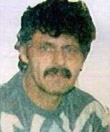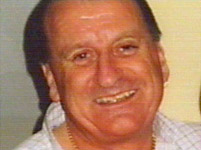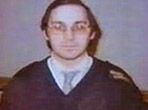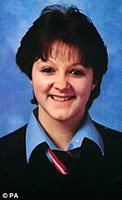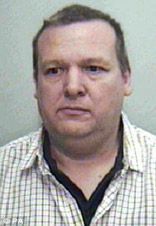Science of the Future:
Identifying Criminals Through Their Family Members
Table of Contents:
- What is a Familial Search?
- United Kingdom – A Pioneer in Familial Searches
- Case Solved – British Serial Killer: Joseph Kappen
- Case Solved – The Bloody Brick: Craig Harman
- Case Solved – A Loner: Jeffrey Gafoor
- Case Solved – The travelling Rapist: James Davies
- Case Solved – The "Shoe Rapist" James Lloyd
- Case Solved – "Killer was a Father of Four" Paul Hutchinson
- European Court Ruled that Innocent People Should Not be in the DNA Database
- The United States and Familial Searches
- BTK Serial Killer of Wichita
- James Michael Biela
- Exonerating the Innocent - Darryl Hunt
- Tony Oliveo Mack
- Symposium – Genetic Privacy, DNA Databasing & Familial Searching
- Opponents of Familial Searches
- Proponents of Familial Searches
- Conclusion
What is a Familial Search?
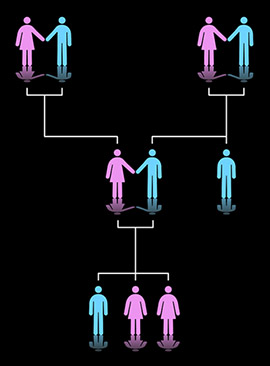 As a result of the growing number of DNA profiles stored in DNA databases worldwide, a controversial technology has emerged onto the forensic scene. Criminals whose DNA profile has never been entered into a DNA database because they were never arrested, prosecuted or convicted of a crime can still be identified through a technique called familial searches.
As a result of the growing number of DNA profiles stored in DNA databases worldwide, a controversial technology has emerged onto the forensic scene. Criminals whose DNA profile has never been entered into a DNA database because they were never arrested, prosecuted or convicted of a crime can still be identified through a technique called familial searches.
Today, your DNA kinship can be sufficient to link you to a crime.
According to the National District Attorneys Association,
"Familial searching is a technique whereby a crime scene profile is deliberately run through the offender databank in the hopes of getting a list of profiles that are genetically similar to the DNA evidence and using this information as an investigative lead to interview family members of the near matches."
When a DNA profile is obtained from a crime scene and that profile is passed through the FBI's electronic program, the Combined DNA Index System (CODIS). A perfect hit will be obtained if all 26 alleles match a DNA profile in the database, indicating that the DNA sample is from the same person. But if a partial match occurs on at least 15 or more alleles then this could indicate that a close relative left the sample at the crime scene. A relative whose past conviction or arrest required them to provide their DNA can now send another family member to prison.
Familial searches should not be confused with partial matches. According to Jeffrey Rosen law professor at George Washington University, legal affairs editor of the New Republic and director of the Brookings Project on Technology and the Constitution School, "partial matches emerge inadvertently from a routine search of the DNA database, while family searches represent a second deliberate trolling of the database for close biological relatives after the first search had failed to produce a perfect match."
United Kingdom – A Pioneer in Familial Searches
Since 2002, the United Kingdom (UK) has been the pioneer in the use of familial searches and routinely performs them on violent crimes (murder, rapes, child rapes and terrorism). They match the DNA profile of the perpetrator found at crime scenes with family members who were already in the DNA database. These matches have helped UK law enforcement solve a number of high profile cases, some of them cold cases.
One of the reasons that the UK has been the leader in familial searches is because British software is more useful in identifying a relatives' DNA than the software used in the United States. The British technology can narrow the search down to Y-STR (Short Tandem Repeats found on the male-specific Y Chromosome). These searches highlight individuals with the same paternal lineage.
In addition, the UK has already entered the DNA profiles of more than 5% of its population (from England, Wales and Northern Ireland), which makes familial searches more tempting. On March 18, 2008, the Yorkshire Post reported, that "Britain holds DNA profiles on a higher proportion of its population than any other country, with one in 14 UK citizens and samples from 380,000 unsolved crime scenes in the database." Just recently, on October 28, 2009, The Telegraph, reported that the DNA database of England and Wales holds 5.5 million DNA profiles. When the DNA profiles of Scotland and Northern Ireland are added then it is almost 6 million people.
Case Solved – British Serial Killer: Joseph Kappen
The world's first familial search helped solve a triple murder almost 30 years after the crimes occurred. Twelve years after the British serial killer died, and 29 years after he committed three murders, Joseph Kappen was identified as the killer. In 1973, three 16-year olds, Pauline Floyd, Geraldine Hughes and Sandra Newton were raped, strangled and left in the woods near Port Talbot in South Wales. Police had investigated about 200 suspects at the time, but there were no arrests. Finally in 2000, Dr. Jonathan Whitaker, a forensic scientist with the Forensic Science Services, analyzed the biological evidence of this 28 year-old cold case with a new DNA tool called Low Copy Number (LCN). LCN produced a full genetic profile of the killer that matched the DNA found on the three girls, but no match could be found in the British DNA Database.
Then in October 2001, Dr. Whitaker decided to do something unusual - he wondered if the killer might have a relative in the DNA database. He found one partial match – to a local car thief named Paul Kappen. At the time of the murders Paul's father, Joseph Kappen, had been one of several hundred suspects interviewed about the murders.
Joseph was a bouncer and nightclub doorman at several nightclubs in the area at the time of the murders, but he had died of lung cancer in 1990. Law enforcement wanted to be sure they had their suspect and asked the Kappen family (his ex-wife and children) to exhume Joseph's body for a final DNA analysis that would seal the case. On May 16, 2002, the body of Joseph Kappen was exhumed and DNA from his teeth and femur matched the DNA profile from the three crime scenes.
Case Solved – The Bloody Brick: Craig Harman
This was the first familial search in Great Britain in which the suspect was apprehended and convicted of the crime. In the early morning hours on March 21, 2003, Mr. Michael Little, a 53-year-old truck driver, was driving his truck on a highway in Surrey, when he drove beneath an overpass. A brick was thrown from the overpass and crashed through his windshield. It hit Mr. Little in his chest and caused fatal damage to the heart. Before Mr. Little died, he was able to bring his truck to a stop on the side of the road.
Law enforcement analyzed the blood on the brick and found two DNA profiles, one of Mr. Little and one of another unknown individual. That evening, before the brick was thrown from the overpass, a car had been burglarized in the same town. The burglar could not get the car started and he left his blood at the scene.
The police were able to extract a full DNA profile and it matched the DNA profile on the brick which killed Mr. Little. The profile was run through the DNA Database, but no match was found.
However, the DNA analysis established that the offender was caucasian. A police profiler looked at the details of the crime, and suggested that he was under the age of 35. Also, Surrey police believed the killer lived locally and so authorities performed a DNA dragnet screen involving 350 people from the surrounding area who volunteered to give samples. But still no match was found.
Law enforcement then decided to perform a familial search of white males under the age of 35 living in Surrey or Hampshire. Twenty five people with similar DNA were located including a relative of the suspect whose DNA matched 16 of 20 DNA markers. They interviewed the relative and discovered that he had a 19-year-old brother, Craig Harman, who lived where the crime had occurred. Harman gave his DNA voluntarily and confessed. In April, 2004, Craig Harman pleaded guilty to manslaughter and was sentenced to 6 years.
Case Solved – The Loner: Jeffrey Gafoor
Another familial search which made headlines in Great Britain, was the story of Lynette White, a 20-year-old prostitute who was brutally stabbed more than 50 times on Valentine's Day in Cardiff, Wales in 1988. Three local men were wrongly accused of the murder and sent to jail. They became known as the "Cardiff Three" - Stephen Miller, Tony Paris and Yusef Abdullahi all spent time in jail for a crime they did not commit. They were cleared on appeal in 1992 and currently have a civil action against the South Wales police department. In March 2009, thirteen police officers involved in the case, some still serving and others retired, were summonsed with conspiracy to pervert the course of justice by putting three innocent men in prison.
In 2000, a DNA profile of the actual killer was obtained, but no match was found in the UK DNA Database. In 2003, a familial search was performed and a close match to a 14-year-old boy with a similar genetic profile was found in the database. The DNA profile showed a rare gene variant found only among family members of the suspect. Because the boy was not even born when the crime was committed, law enforcement looked at his close relatives. This led police to the boy's 38-year-old paternal uncle, Jeffrey Gafoor.
Gafoor confessed and received a life sentence for the killing of Lynette White.
Case Solved – James Davies
From 1998 to 2000, James Davies committed three violent sex attacks on women in three different counties in the UK. The DNA profile obtained on those three women proved to be from the same serial predator, but his DNA was not in the DNA database. In 2005, a familial search was performed. A 15 allele match was found between 15 individuals. Police investigations were able to eliminate 14 of the 15. The 15th individual was James Davies. Upon his arrest on August 17th, 2005, Davies' DNA was tested and found to be a perfect match with the DNA profile found on the victims.
Case Solved – The "Shoe Rapist" James Lloyd
The most famous familial search case that made headlines around the world was the case of the "Shoe rapist." Between 1983 and 1986, women who wore stiletto shoes in South Yorkshire were attacked by a serial rapist. At night, a masked man would attack the women as they walked home from pubs and clubs in the area. The rapist would drag the women off the street and tie them up with stockings before raping them. He made a habit of stealing the shoes of his victims and was therefore named the "shoe rapist." He was never caught.
In March 2006, the UK DNA Lab ran the rapist's DNA through its database as a familial search and got a hit. It matched the DNA of the rapist's sister who had been arrested for a DUI offense in 2000. The sister recalled that her brother, upon hearing of her arrest in 2000, asked her, "Did they take your DNA?" When the answer was "Yes", the rapist, James Lloyd.

Friday, 4 July, 2003
Police suspect Lloyd of having raped at least 10 women.
On September 4, 2006, Lloyd was given a life sentence and the judge ordered that he must serve at least 15 years in prison before becoming eligible for parole. In September 2007, Lloyd's sentence was reduced to seven years.
Case Solved – "Killer was a Father of Four" Paul Hutchinson
In the evening of October 30, 1983, Colette Aram, a trainee hairdresser, was walking to her boyfriend's house. Sadly, she never made it there. She was abducted by Paul Hutchinson, dragged into the back of his stolen car, beaten over the head with a bottle and raped. Hutchinson then strangled her with his bare hands and left her body in a nearby field. After the crime, Hutchinson went to a nearby pub to clean himself and purchased a drink and a sandwich. The next morning Colette's body was found. A man of the same description was seen in that pub and police retrieved hundreds of items from the pub hoping there would be something from the killer. Police were able to recover paper towels with blood and semen on it; the DNA was from both the killer and victim. But, even with the killer's DNA, Hutchinson was never identified as a suspect.
Hutchinson soon left town. He shaved his head, told his family he had cancer, and moved away. Later, Hutchinson moved back to the same area, even taunting police by sending letters as if he was Jack the Ripper, telling them that he was still free and that they will never get him. Over the years, Hutchinson went on to get a psychology degree, married twice, and had four children. He was employed as a youth worker and later became a businessman.
In 2007, police developed a full DNA profile of the killer from the DNA recovered from the paper towels left at the pub near the crime scene. They passed it through the DNA database on a regular basis but obtained no hits. However, in June 2008 police got a break. Hutchinson's 20 year-old-son , was arrested for a driving offense when he crashed into a parked car and had to give a DNA sample. On March 26, 2009, the police obtained a "near identical match to the DNA of Colette's killer." It was a familial match with Hutchinson and his two brothers. All three men were arrested on April 7 and gave a DNA sample. Paul Hutchinson's DNA was a perfect match and he was subsequently arrested. On January 25, 2010, he was sentenced to life. He will serve a minimum of 25 years for the rape and murder of Colette Aram, a crime he had committed in October 1983.
European Court Rules that Innocent People Should Not be in the DNA Database
Despite many successes with familial searches, there are critics. Much of the criticism involves the fact that there are many innocent people in UK's DNA Database. This is a valid argument. In the UK, there are about 4.6 million people who are entered in the DNA database for a "recordable offense." But, the database also includes about 800,000 individuals who are innocent of any crimes and of those 800,000 individuals, 40,000 of them are children. According to a December 4th 2008 BBC report one in five people in UK's DNA database do not have a current criminal record. Under British Law, regardless of whether a person is charged or convicted of the crime they were arrested for, their DNA profile stays in the database for life.
In recent years this has caused a great deal of criticism against the British government among civil libertarians and civil rights organizations. As reported by the BBC News on December 4, 2008, the European Court of Human Rights (ECHR) in Strasbourg, France, ruled that keeping the DNA records of innocent people within a criminal register breached article eight of the Human Rights Convention – "Everyone has the right to respect for his private and family life." The BBC article continued that the court also ruled that "the retention in question constituted a disproportionate interference with the applicant's right to respect for private life and could not be regarded as necessary in a democratic society."
In May of 2009, Sir Jeffreys, the "father of DNA fingerprinting" gave an interview to the British newspaper The Guardian, stating that he was concerned about putting innocent people in the British DNA database and that he condemned plans to retain DNA data of innocent people.
In response to the ECHR ruling, the British Home Secretary produced a new set of proposals. The website of the House of Commons Library provided a summary of this report, Retention of Fingerprint and DNA Data.
The report states that the British government is considering changing its current policy and may retain DNA profiles of innocent people for only six years. On December 9, 2009 the Council of Europe expressed its concern that the new proposals as outlined by the British Home Secretary still fail the proportionality tests required by the ECHR. The Council of Europe will review the British position again in March 2010.
So far, the practice of familial searches has never been challenged in a British court of law or in front of ECHR. Perhaps one reason is that familial searches enjoys wide public support because of its success. Since 2003, British law enforcement has routinely used familial searches to help solve violent crimes such as rapes and murders - crimes that would not have been solved otherwise.
The United States and Familial Searches
As of January 2010, the FBI's National DNA Index System (CODIS) contains over 7.8 million DNA profiles of offenders and over 300,000 forensic profiles, making it the largest DNA database in the world. (Compared to the British system that has more than 5% of its citizens in its DNA database including 800,000 innocent people, the U.S. has only 0.5% of the American population.) CODIS has produced over 101,000 hits and assisted in more than 100,000 investigations. One can follow the statistics of CODIS at the FBI CODIS website. The website tracks the number of offenders added to the DNA Database of each state and also follows the number of "Investigations Aided" where CODIS has added value to the investigative process.
Following the success of familial searches in the U.K., two major studies brought the issue of familial searches to the forefront in the U.S.
In 2004, the U.S. Justice Department published a report that concluded that almost half (48%) of all prison inmates surveyed reported having a close relative who had also been imprisoned. Usually this was a sibling, primarily a brother.
In 2006, a study was published in Science Magazine by Frederick R. Bieber, Charles H. Brenner and David Lazar entitled "Finding Criminals Through DNA of Their Relatives." which calculated that familial searches could produce 20% to 40% more "useful leads" if used by law enforcement and prosecutors.
The issue of familial searching has not yet been supported by Congress due to 4th Amendment concerns and the fear of creating unwilling genetic informants. Many constitution and defense attorneys, civil libertarians, and numerous citizens believe that a specific law allowing for familial searches would violate the 4th Amendment's protection from unreasonable search. Individual states, however, have taken the lead and passed their own procedures to apply familial searches. Therefore, there are examples where familial searches and/or partial matches were used in the U.S.
BTK Serial Killer of Wichita
Perhaps the most famous familial search case took place in 2005 with the identification and arrest of the "BTK" - Bound Torture & Kill serial killer, Dennis Rader. Rader was responsible for ten horrific murders in Wichita, Kansas from 1974 to 1991. The DNA profile that Rader left on his victims had been run periodically through CODIS without obtaining a hit.
In 2004, law enforcement focused on Rader after he sent an anonymous package to police with a story about his crimes on a computer disk. The disk was traced back to a computer at a church where he volunteered. Before police arrested Radar they wanted to be sure he was the killer. A warrant was issued to obtain genetic material from Rader's daughter, a 5-year old pap smear which was stored at the Kansas State University Hospital where she had been a student. When the daughter's DNA profile was compared with the DNA profile of Rader it was found to be a perfect familial match. Law enforcement was confident that they had found the serial killer and arrested Rader.
In June 2005, Rader entered a guilty plea for the ten killings and two months later he was sentenced to life for each murder.
A serial rapist and killer: James Michael Biela
In this example, the DNA of the son led to the arrest of the father. On January 19, 2008 Brianna Denison, a 19 year-old college student was abducted from her friend's apartment in Reno, Nevada. Brianna's body was found one month later. She had been raped and strangled. Police were able to obtain a DNA profile from the crime scene. Following a tip to the Secret Witness Hotline, law enforcement interviewed a suspect named James Michael Biela. Biela, a construction worker and a former marine, was elusive during the interview and refused to provide a DNA sample. The police turned to Biela's girlfriend who gave law enforcement permission to take DNA from their four year old son. That DNA proved to be a very close match to the DNA found at the crime scene. Biela was subsequently arrested and has pled not guilty. Biela is currently awaiting trail and a tentative trial date was set up for February 2010.
Exonerating the Innocent - Darryl Hunt
The first accidental familial search in North Carolina lead to the exoneration of an innocent man. In 1984, Darryl Hunt was convicted of the murder of 25 year-old Deborah Sykes in Winston-Salem and sentenced to life in prison. In 1994, retrospective DNA testing of Hunt did not match the DNA profile from the crime scene. Despite this result, Hunt's appeals were rejected. At the request of Hunt's attorney in 2003, the State Bureau of Investigation's DNA Lab ran the DNA profile found at the Sykes crime scene through its offender profiles database. They got a partial match (16 out of 26 alleles) from Anthony Brown. Law enforcement investigated further and discovered that Anthony had a brother, Willard Dennard Brown. Police questioned Willard Brown and during the interview they offered him a cigarette. When it was discarded, the police recovered the cigarette butt and tested his DNA. It matched the DNA found at the Sykes crime scene. In December 2003, Brown confessed to the 1984 rape and stabbing death of Deborah Sykes. On February 6, 2004, Superior Court Judge Anderson Cromer vacated Hunt's murder conviction and Hunt was freed later that year. (For more information, please view the CBS 60 Minutes report that aired on July 15th, 2007, about Darrell Hunt's odyssey.)
Tony Oliveo Mack
In 2006, Tony Oliveo Mack, was sentenced to 30 years in prison (after a plea bargain) for the 1989 murder of Joyce Robinson in Sumter, South Carolina. Mack was linked to the murder when a partial DNA hit matched his brother who was already incarcerated and whose DNA profile was in the offender's DNA database. In addition, Mack's fingerprints were also found on a purse in Ms. Robinson bedroom and on her bathroom sink.
Symposium – Genetic Privacy, DNA Databasing & Familial Searching
In March 2008, the first Symposium on "Genetic Privacy, DNA Databasing & Familial Searching" was organized by the FBI in Arlington, Virginia. The purpose was to bring experts, scientists, prosecutors, defense attorneys and law enforcement together to discuss the benefits and challenges of familial searching.
Thomas F. Callaghan Ph.D., then head of the FBI laboratory's CODIS unit, opened the symposium, by stating that at this time, familial searches were not performed at the national level and were not supported by the current CODIS software. However, Callaghan continued, to assist partial matches, local laboratories may perform additional testing such as Y-STR's or mt DNA.
Opponents of Familial Searches
At the Symposium, opponents to familial searches included: Tania Simoncelli, science advisor to the American Civil Liberties Union (ACLU), Stephen Mercer, a defense attorney, Jeffrey Rosen, Professor of Law at George Washington University Law School, and Barry C. Scheck, Professor of Law at the Benjamin N. Cardozo School of Law in New York City and co-founder and Director of the Innocence Project.
Ms. Simoncelli argued that the use of familial searches would target a specific group of people – minorities. Simoncelli stated that African Americans and Latinos would be targeted more by law enforcement, it would put family members under "genetic surveillance" for crimes they did not commit, and family members would become "genetic informants." In addition, Simoncelli remarked that if familial searches were practiced on a routine basis, hundreds of thousands of innocent people who happen to be relatives of individuals in a DNA database would be subjecting themselves to lifelong surveillance.
Defense attorney Stephen Mercer presented a different perspective. He argued that the danger lies in using the DNA database to determine if people who commit criminal acts have genes that predispose them to violence or other antisocial behavior.
Professor Rosen expressed his concerns that using partial matches had constitutional constrains. First, he argued that it was in violation of the 4th Amendment – which had not been implemented for genetic surveillance. Secondly, "sins of the fathers" should not be visited on their sons. Thirdly, when the biological evidence is collected from the crime scene, the extracted DNA was meant to be used for one purpose and should not be used for another purpose (looking for family member in the same gene pool). Fourthly, there will be a question of equality, as the majority of people who will be put under a microscope will be minorities.
Mr. Scheck, co-founder of the Innocence Project in 1992, stated that he could support familial searches only if Congress authorized it and put solid safeguards in place. He said that no one should be allowed to embark on a fishing expedition "trolling and trawling the DNA database for evidence until you find what you want." Scheck added that when Congress passed the DNA Identification Act of 1994, "it did not think for a nanosecond that it was authorizing a database that was going to be used for purposes of familial searches."
Proponents of Familial Searches
At the Symposium, one of the proponents of familial searches was Mitch Morrissey, the District Attorney of Denver Colorado. Morrissey was the first prosecutor to introduce DNA evidence used in a criminal trial in Denver. During his presentation, Morrissey discussed how a partial match or familial search could solve more cold cases. Morrissey argued that there is no 4th Amendment protection for DNA left at a crime scene and no prohibition to law enforcement looking for the DNA of someone else, even that of a relative. For example, on Mr. Morrissey's website he cites cases where courts have ruled against suspects who had argued about their DNA being "seized" against their will and used to identify them. These courts have stated, "a warrantless seizure of property whose owner has abandoned it does not violate the 4th Amendment." In addition, courts have also ruled that a suspect does not have a privacy concern when they abandon or disregard personal items where their DNA could be extracted. The courts have said that in these situations there is "no reasonable expectation of privacy" and a suspect is "not deprived of his rights against unreasonable searches and seizures."
Another proponent at the Symposium was Dr. Frederick Bieber, a medical geneticist at Harvard's Brigham and Women's Hospital and one of the author of the article "Finding Criminals Through DNA of Their Relatives".
Dr. Bieber began his presentation with an intriguing question: "Does crime cluster in families?" His answer was: "We know that it does." One governmental study showed that 45% of inmates have a family member (usually a brother) that is or has been incarcerated.
Retired Alameda County District Attorney Rockne Harmon prosecuted criminals for 35 years. He explained that familial searches can help law enforcement solve crimes that would have never been solved otherwise. In respect to Simoncelli's concerns regarding minorities, Harmon reminded the audience that the majority of crime victims are minorities. Crimes are often committed within the same ethnic group. This is not targeting a specific group of people, but simply solving a crime where color should not be the issue. Policies must be developed to use the power of familial searching because too often the victim's rights are being forgotten.
Chief Constable Tony Lake of the Lincolnshire Police and chair of the United Kingdom National DNA Database Board explained that for law enforcement the prevention of crime is as important as the detection of crime. It is "policing for the protection of the public" and familial searches are part of the protection of the public. Mr. Lake emphasized that it is "people's human right to be safe in a society and therefore familial searches justifies the means."
Conclusion
Undoubtedly, familial searches are an effective law enforcement tool that can help solve crimes that would otherwise go unsolved. The biggest criticism focuses on how minorities will be affected. The critics are right. More minority suspects will be identified through this process. Jeffrey Rosen recently wrote a compelling piece in Slate magazine: Genetic Surveillance for All.
He states in his article that African-Americans represent about 13% of the U.S. population, but represent 40% of the people convicted of felonies every year. Rosen cites Hank Greely, a law professor at Stanford Law School, who has estimated that 17 percent of African-American citizens could be identified through familial searches, as opposed to only 4 percent of the Caucasian population. Does this mean that if members of your family are criminals that you, a first time offender, have a greater chance of being identified and caught? The answer is yes. While the sins of the father should not be visited on the son, the sins of the son should not go unpunished because the sins of the father are ignored. Law abiding citizens do have an interest in being free of crime and criminals. If left to a vote would the majority of Americans want law enforcement to use familial searches, a new tool, especially when the sharpness and effectiveness of this tool is proportional to the degree that groups of related people prey on ordinary citizens? Probably yes. Furthermore, if law enforcement's use of familial search technology becomes common knowledge among offenders it may act as a deterrent within this population . Of course there should be strict rules and law regarding its use. How one's DNA gets into a DNA database must be closely monitored and regulated so that it contains the DNA of offenders and not innocent people. Finally, the appropriate use of familial searches should be to help solve violent crimes such as rape and murder, crimes where society's interest are the highest. Individual states will lead the way and draft laws which permits them to conduct appropriate familial searches.
↑ Return to Top
